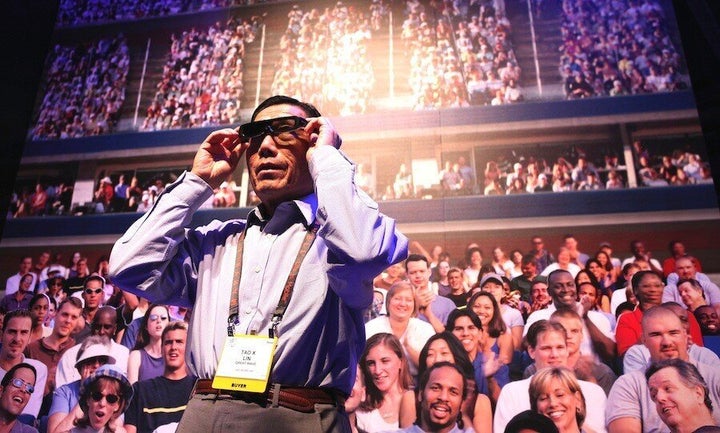
At a Comic-Con panel last week for the upcoming big-budget sci-fi caper "Prometheus," director Ridley Scott made a bold statement. Scott, who has given us some of the biggest hits of the past thirty years, announced that he would never work without 3D technology again, "even for small dialogue scenes," for the remainder of his career. Though we all know small dialogue scenes are made better when things are flying at our faces at 100 miles per hour, Scott is not alone in his embracing of the technology. Other beloved directors have made similar statements recently. Just last year, Martin Scorsese said that his next film, "The Adventures of Hugo Cabret," would be shot in 3D, and around the same time, he also suggested that smaller, more dramatic films should be shot using the now-ubiquitous technology. Because, why not? "We see in depth, for the most part," Scorsese said in 2010. "We go to the theater -- it's in depth. Why couldn't a film like Precious be in 3D? It should be." As the number of 3D-capable theaters rises exponentially year after year, ticket prices increase as well, and more and more 3D films are going into production. Since 2008, the number of 3D films being put out has more than doubled each year. But at what cost? And are the studios actually benefiting? Director James Cameron -- whose "Avatar" is the highest-grossing film of all time and who many blame/credit with the onslaught of 3D films in recent years -- has warned against using 3D technology in the wrong ways. That extra D, he said, should be used sparingly -- not as a last ditch effort to drum up extra studio cash. "You've got people quickly converting movies from 2D to 3D, which is not what we did," he told Deadline last year. "They're expecting the same result, when in fact they will probably work against the adoption of 3D because they'll be putting out an inferior product." And, indeed, American audiences are turning away. BTIG Research reported that only 45 percent of ticket sales for the recent "Kung Fu Panda 2" came from the 3D presentation. This is the lowest 3D box office share since "Despicable Me" in summer 2010, which showed on fewer 3D screens than "Panda 2." The 3D box office for the newest "Pirates of the Caribbean" film also fell week-to week, from 46 percent in its opening week, to 44 percent the second week. Entertainment Weekly noted that these returns mark a dramatically sharp percentage drop from other "3-D event films" like Tim Burton's "Alice in Wonderland" and last winter's "Tron: Legacy."
And for the newest "Harry Potter" film? Only 34 percent of ticket buyers chose to go the 3D route, BTIG reported, with the rest opting for the good ol' fashioned 2D. "The audience has spoken, and they have spoken really loudly," Dreamworks executive Jeffrey Katzenberg told the Hollywood Reporter. Whereas a year and a half ago, there was "genuine excitement" about the new 3D films, he said, the technology is in the midst of its "terrible twos." The newest batch of lazily slapped together presentations, he said, have undermined audience expectations, and represent squandered opportunities for Hollywood. Roger Ebert has also repeatedly knocked 3D technology, even titling one of his articles for Newsweek: "Why I Hate 3D (And You Should Too)." He wrote that 3D tends to add nothing to the movie-going experience aside from "nausea and headaches" and usually serves as more of a distraction than anything else. "I'm not opposed to 3-D as an option," Ebert wrote. "I'm opposed to it as a way of life for Hollywood." Actor Will Arnett went a step further in a live episode of Marc Maron's WTF podcast a couple weeks ago. "Is it just me," he asked, "Or does 3-D suck?" "Yeah, what's the best thing that happens?" Maron replied. "You go, woah! And lean back a little bit. That's all."
Perhaps Hollywood could take a cue from the famed German director, Werner Herzog, whose recent exploration of the Chauvet Cave in France, "Cave of Forgotten Dreams," used the technology for something other than explosions or talking owls.
Writing for the Atlantic, Leah Carroll called Herzog's use of 3D to illuminate the secrets of the cave "a stroke of genius" and the finest alternative to the big budget 3D fare she had grown to despise.
Newer films should learn how to use the technology sparingly, rather than consisting trying to overwhelm the audience. If Hollywood isn't careful, 2D might just remain in business a little while longer.